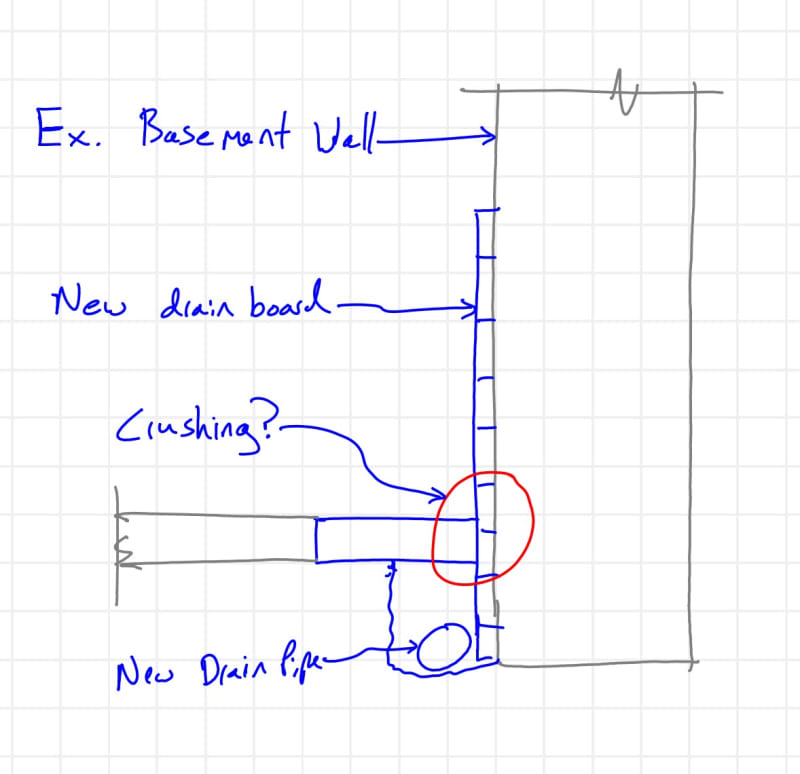RFreund
Structural
- Aug 14, 2010
- 1,880
I'm curious to know if there is a concern for drainage board crushing at the joint of a foundation wall and basement slab. This detail seems fairly reasonable as a way to mitigate water intrusion through basement walls, but many times the basement wall is relying on the concrete slab to resist lateral forces. Especially in old basements which seem to typically have these type of water intrusion issues. See sketch below:

EIT

EIT
